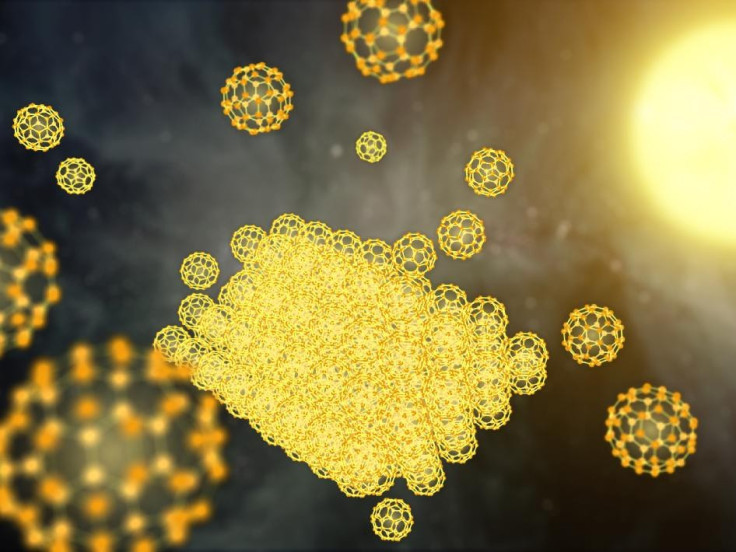Candidate for Hydrogen Storage: Boron Buckyballs Roll Out of Lab

If carbon can be a football fan, so can boron.
Researchers from Brown University, Shanxi University and Tsinghua University in China have shown that a cluster of 40 boron atoms forms a hollow molecular cage, similar to the carbon buckyball.
Carbon buckyballs are soccer-shaped carbon molecules discovered 30 years ago, spawning a revolution in nanotechnology.
The cage structure was believed to be unique to carbon. Till boron hit the goal recently.
"This is the first time that a boron cage has been observed experimentally," said Lai-Sheng Wang, a professor of chemistry at Brown who led the team that made the discovery.
Wang and his colleagues have dubbed the boron structure as borospherene, in the journal Nature Chemistry. What is exciting is that the new structure could be ideal for hydrogen storage. Due to the electron deficiency of boron, borospherene would bond well with hydrogen. But that will have to be investigated.
Though boron was carbon's neighbour on the periodic table, the 60-atom structure was believed to be out of its reach due to one electron deficiency.
Wang and his research group have been studying boron chemistry for years. They showed that clusters of 36 boron atoms form one-atom-thick disks which might be stitched together to form an analog to graphene. Wang's preliminary work suggested that there was also something special about boron clusters with 40 atoms. They seemed to be abnormally stable compared to other boron clusters.
Using experiments and computer modelling, the team studied the binding energies of the cluster and found that they matched those of a semi-flat molecule and the buckyball.
The borospherene molecule isn't quite as spherical as its carbon cousin. Rather than a series of five- and six-membered rings formed by carbon, borospherene consists of 48 triangles, four seven-sided rings and two six-membered rings. Several atoms stick out a bit from the others, making the surface of borospherene somewhat less smooth than a buckyball.
Cheap Hydrogen fuel
Researchers elsewhere have developed a technology that could overcome a major cost barrier to make hydrogen fuel -- a fuel that could replace environmentally harmful fossil fuels. The technology is far more efficient than when using other catalysts investigated so far.
The new technology uses a novel catalyst that performs almost as well as platinum in electrolysis reactions where electric currents split water molecules into hydrogen and oxygen.
In a recent scientific paper published in Angewandte Chemie International Edition, the scientists reported that their technology, called "noble metal-free nitrogen-rich carbon nanotubes," efficiently catalyse the hydrogen producing reaction with activities close to that of platinum. They also function well in acidic, neutral or basic conditions, allowing them to be coupled with the best available oxygen-evolving catalysts that also play crucial roles in the water-splitting reaction.
The National Science Foundation funded the research.
Making hydrogen fuel is one thing but storing it is yet another ball game. Liquid hydrogen requires cryogenic storage or it can boil away. Compressed hydrogen requires a large area for storage due to poor energy density by volume. Perhaps the boron buckyball can be the storage candidate.
© Copyright IBTimes 2025. All rights reserved.





















